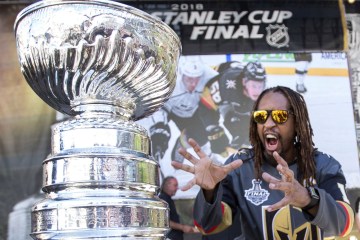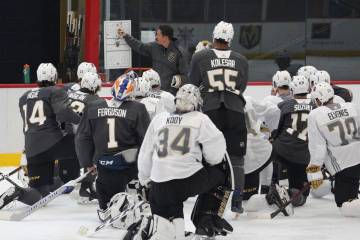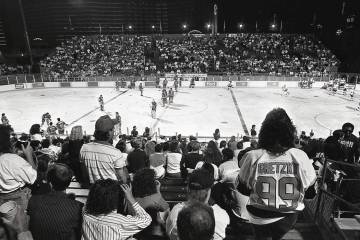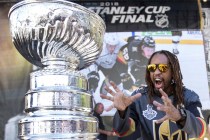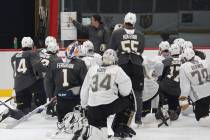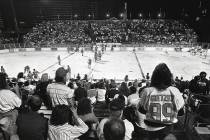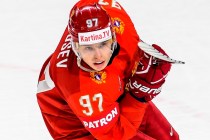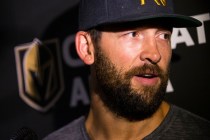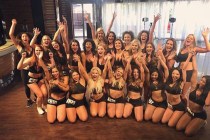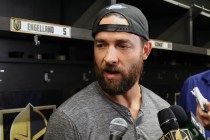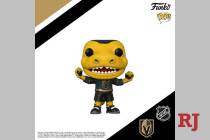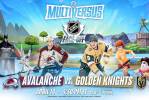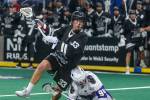Geographic diversity helps USA Hockey at elite level
TORONTO — It used to be that players from Minnesota and Massachusetts comprised every USA Hockey roster, whether for the Olympics or World Junior Championships.
Those days, like wooden sticks, are long gone.
The latest generation of future NHL players hails from nontraditional hockey markets. Clayton Keller is from St. Louis. Troy Terry is from Colorado. Caleb Jones is from Texas. They and many others have blended in with Colin White, who is from Hanover, Massachusetts, and Joey Anderson, from Roseville, Minnesota.
They give the USA one of its most diverse rosters as the Americans prepare to finish round-robin play in the World Junior Hockey Championships at 12:30 p.m. Saturday (NHL Network) against rival Canada at the Air Canada Centre. Both teams are 3-0 and will pack their gear and head to Montreal for the knockout phase beginning Monday at the Bell Centre.
For Team USA, it’s not just about diversity on the roster, it’s about depth and the ability to get scoring throughout its lineup. Of the 20 skaters who have suited up, 19 have registered at least one point for the USA, which has outscored opponents 14-5 after Thursday’s 3-2 win over Russia.
“We said it from Day One in Buffalo that we felt we had four lines that could score,” coach Bob Motzko said. “We believe in the guys in this room and know they’re all capable of scoring.
“The players know that, too, and I think it keeps someone from squeezing their stick thinking they need to be ‘the guy.’ Anybody in there can be ‘the guy,’ and that’s what we feel makes us a difficult team to face throughout this tournament.”
That the players not only can blend their skills on the ice but also quickly develop such a solid chemistry off it speaks to how the sport has grown and escaped its provincial roots of cold-weather locales, as was the case in 1980 when all but three players on the Miracle on Ice Olympic gold-medal roster were from Minnesota and Massachusetts.
“I think it’s a tribute to the former NHL players in a lot of these cities who have helped coach the players when they were young and teach them the game,” Keller said. “In St. Louis, we had several former NHL players work with us, and it makes a huge difference because you’re learning to play the game the right way at young age.”
For defenseman Charlie McAvoy, who grew up in Long Beach, New York, and followed the path of former NHL players Joe and Brian Mullen, being from a nontraditional hockey area was hardly a detriment.
“You’re always aware of those who came before you,” McAvoy said. “New York has had youth hockey for a long time. I played in the Met League (Metropolitan Junior Hockey League), and now I’m in college (Boston University).”
White, who plays at Boston College, said while it was easy to find ice growing up in the Boston area, it was still about receiving the proper coaching and learning the right fundamentals.
“I was fortunate to get good coaching when I was young,” White said. “I think it’s great to see so many guys come from different parts of the country, and USA Hockey has done a great job of developing the sport.”
Some players think the next big boon in youth hockey will come from Las Vegas, where the expansion Golden Knights begin play in the NHL in the 2017-18 season. Jason Zucker wore the same USA sweater at this competition in 2010, and current players think it’s a matter of time before another Las Vegan represents Team USA at the World Juniors and eventually plays in the NHL.
“Look at Auston (Matthews),” Keller said. “He came from Arizona. I have no doubt that Vegas can do the same thing and produce players for the national team and the NHL.”
Contact Steve Carp at scarp@reviewjournal.com or 702-387-2913. Follow @stevecarprj on Twitter.
WORLD JUNIOR HOCKEY CHAMPIONSHIPS
What: USA vs. Canada
When: 12:30 p.m. Saturday
Where: Air Canada Centre, Toronto
Records: USA 3-0, Canada 3-0
TV: NHL Network







